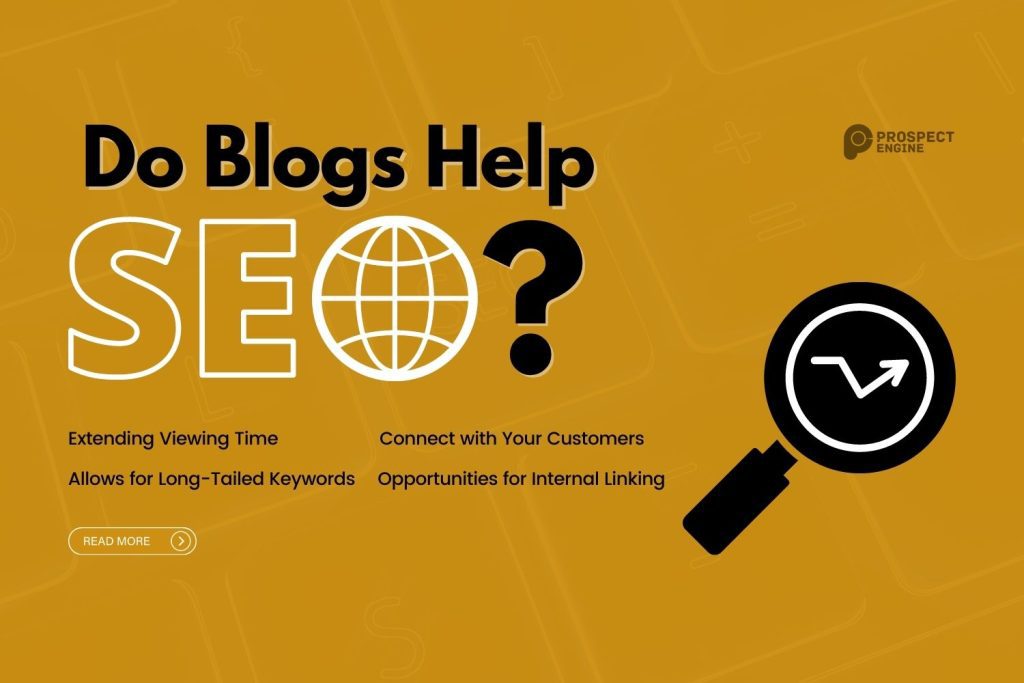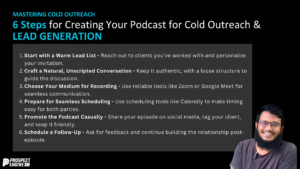Blogging is a highly competitive space in the digital world, with businesses striving to achieve high search rankings. At the forefront of this pursuit is the enigmatic field of search engine optimization (SEO), a multifaceted practice involving an array of techniques to enhance the discoverability and visibility of online content. One of the most critical techniques is the strategic utilization of keywords. These carefully selected words or phrases capture the attention of search engine algorithms and propel a website or webpage to the coveted upper echelons of search results. The higher a website’s ranking, the more conspicuous and accessible it becomes, increasing the likelihood of visitors not only discovering it but also engaging with it. Ultimately, effective SEO, including the use of relevant keywords, is the key to unlocking the full potential of any online presence, including a blog.
Do Blogs Help SEO?
Creating consistently engaging blog content for your business website is paramount to achieving online success. Doing so will substantially increase the probability of attracting potential customers to your brand. An engaging blog can prove to be an effective way of drumming up interest for a cause, capturing attention for a retail endeavor, or generating promising sales leads for a B2B company. Nonetheless, it’s crucial to note that SEO tactics must be employed and utilized correctly to derive benefits from your blog content.
As you may be aware, perplexity and burstiness are vital factors when it comes to creating compelling blog content. An overly simplistic blog post will not captivate your audience’s attention, while an exceedingly convoluted one will only confuse them. Likewise, if the blog content is composed of identical sentence structures, the audience will likely become bored and disinterested.
With this in mind, it’s imperative that you approach your blog content with an appropriate level of perplexity and burstiness. By incorporating more complex sentence structures and varying the lengths of your sentences, you can sustain your reader’s attention and offer a more captivating reading experience. Furthermore, a carefully selected use of words can enhance the overall quality of your writing and ensure that your content resonates with your target audience.
In summary, generating compelling blog content is a prerequisite for any business that wishes to expand its online reach. To achieve this, it’s crucial to employ appropriate SEO tactics and incorporate a balanced amount of perplexity and burstiness into your writing. By doing so, you can engage your audience, enhance your brand’s online presence, and ultimately drive increased traffic to your website.
How Does Having a Blog Help SEO?
A multitude of ways exists in which blog writing could contribute to the enhancement of your website’s SEO. A fastidiously strategized and well-managed blog would:
-
- Infuse your website’s informational content with a new lease on life, frequently updated and revamped, to keep it fresh, relevant, and stimulating.
-
- Lengthen the duration of a visitor’s stay on your site through your content’s captivating and absorbing nature.
-
- Afford you the opportunity to use those elusively unique long-tailed keywords, acting as an advantageous edge for your content in terms of search engine ranking.
-
- Facilitate the deployment of internal linking strategies that can usher traffic to your other relevant and valuable content.
-
- Garner the favor of external sources who will voluntarily provide links to your site, bestowing it with a strong, favorable backlink profile.
-
- Open up myriad channels of interaction and connection between you and your patrons, building a sturdy customer base and forging lasting and fulfilling relationships.
Keeping Your Website Current and Interesting
Upon establishing a website, individuals often tend to disregard its state once it has been set up. This perpetual negligence can lead to an unfortunate outcome whereby the information present becomes antiquated, obsolete, or increasingly unappetizing to the audience. However, the advent of the blogosphere provides website owners with an efficacious remedy to this deleterious state of affairs. By incorporating a blog into one’s website, one has the opportunity to readily and seamlessly provide a cornucopia of the novel, cutting-edge, and compelling information that is sure to captivate the user’s attention and pique their interest.
Extending Viewing Time
In its ongoing quest to improve search results, Google has developed a novel method for assessing the value of a website. Rather than relying on arbitrary metrics or superficial characteristics, the search giant has honed in on one key indicator: the amount of time users spend on a given site. Yes, you heard that right. The duration of a visitor’s stay on your website is a vital piece of the SEO puzzle. The longer your users engage with your content, the more Google will reward you with a higher ranking. It’s a simple yet effective way of measuring the true worth of a website and one that has the potential to greatly benefit those who invest the time and effort into creating truly engaging and immersive online experiences.
Allows for Long-Tailed Keywords
When it comes to search engine optimization (SEO), one crucial factor to consider is the level of competition surrounding your target keywords. Short keywords that are composed of only one or two words can be exceptionally fierce and challenging to rank for. Consider, for example, a keyword like “car repairs.” A search using only those two words could yield endless results, effectively burying your site in a sea of competitors.
On the other hand, utilizing long-tailed keywords can provide you with a competitive edge. Not only do they allow you to be more specific, but they also permit you to include other critical details such as locations or other relevant specifics. So instead of targeting a keyword like “car repairs,” change your focus to something like “Toyota repairs Minneapolis MN.” By doing so, you’ll be able to obtain more targeted search results, which can help boost your website’s visibility and ranking.
With the use of blogs, you can further optimize your site by incorporating relevant long-tailed keywords into your content without them seeming out of place or forced. By doing so, you can effectively target specific user search queries and generate higher engagement, leading to more organic traffic and conversions for your site.
Opportunities for Internal Linking
The practice of interlinking one’s website pages, known as internal linking, is a strategy utilized by many online entities to enhance user experience and overall site navigation. This technique involves strategically placing hyperlinks throughout one’s web pages that connect to other related pages on the same website. The primary objective of internal linking is to facilitate ease of access and encourage readers to explore and gain a deeper understanding of the products or services offered by the website in question whilst simultaneously allowing them to navigate the site efficiently. These internal links act as a form of textual signposting, allowing users to quickly and conveniently locate the information they seek. Additionally, by incorporating these links into your blog, your audience can more easily learn about your offerings and services and gain direct access to your contact information, allowing for a more efficient and streamlined user experience.
Encourage Others to Link to Your Site
Creating a superlative blog replete with informative, high-quality content may very well elicit a profusion of webmasters eager to generate backlinks to your site. Seize each instance of linkage as an opportunity to leave an indelible impression upon an entirely novel audience.
Connect with Your Customers
In this digital epoch, the task of endowing your customers with a sense of personal connection to your business has become more arduous than ever before. In order to sustain that bond, a blog that is updated on a regular basis and furnishes responses to their inquiries will bestow upon them a feeling of interconnectedness with your business, thereby fostering a sense of engagement that would otherwise be unattainable.
Which Blog Is Best for SEO?
Creating compelling and engaging content is key to driving traffic to your website and keeping readers interested. However, not all types of blog posts are equally appealing. Some post formats have been shown to be particularly effective in capturing readers’ attention and generating engagement. Here are seven types of blog posts that you should consider including in your content strategy:
-
- How-to guides: These posts provide readers with practical tips and step-by-step instructions on accomplishing a task or solving a problem.
-
- Listicles: These posts offer a list of tips, tools, resources, or ideas on a particular topic, often with a catchy title and concise explanations.
-
- Case studies: These posts provide detailed examples of how real people or businesses have used a particular product, service, or strategy to achieve success.
-
- Predictions and trends: These posts analyze emerging trends and predict how they will impact the industry, market, or audience.
-
- Ultimate guides: These posts offer comprehensive and detailed information on a particular topic, often broken down into sub-sections or chapters.
-
- Interviews: These posts feature interviews with experts, influencers, or customers, providing insights, opinions, or personal stories.
-
- Infographics: These posts use visual design and data to explain complex concepts or statistics, making them easy to understand and share.
How Often Should You Blog for SEO?
Ensuring a fresh and up-to-date blog is critical to attracting returning visitors. However, it’s prudent to bear in mind the risk of overindulgence. The average blog platform can only cope with a certain quota of daily updates without compromising its performance. Furthermore, saturating your platform with too many blog posts released in close proximity may bring about a case of keyword cannibalization. In other words, blog posts within the same site can end up contending against each other for rankings, resulting in a counterproductive outcome.
How to Optimize Blog Posts for SEO
Improving your website’s visibility and attracting more people through SEO requires an adept utilization of two interrelated yet separate textual features: perplexity and burstiness. Unfortunately, reliance on keyword placement is insufficient in today’s highly competitive digital landscape. To stand out, you must embrace other tactics that can help keep your site’s online presence afloat, including but not limited to creating and maintaining an engaging brand-focused blog.
Having said that, not all blogs are created equal. Only a fully optimized blog that leverages the benefits of SEO can aid in your site’s rankings. Therefore, it is essential to adhere to a set of measures to ensure that your blog is optimized and calibrated to capture the maximum SEO potential.
Identify Your Audience and Write for Them
To create engaging and effective blog content that prompts readers to take action, it is crucial to possess a deep and thorough comprehension of your target audience. A holistic and multidimensional understanding of buyer personas is necessary to tailor content that resonates with and speaks to their unique objectives, concerns, and pain points.
To achieve such a comprehensive understanding, it is advisable to leverage analytics tools that enable granular tracking of online engagement patterns. By analyzing key data points such as readers’ age, marital status, educational attainment, geographic location, and other relevant metrics, you can begin to identify and categorize your target audience more precisely.
It is not enough to stop at mere demographics, however. To truly master the art of crafting highly effective blog content, you must probe deeper into the psyche of your target audience. Develop a nuanced and sophisticated understanding of their wants, needs, and desires, and tailor your messaging to fit.
It is important to recognize that the task of writing blog content is not merely an exercise in grammar and syntax. Rather, it is a complex and dynamic process that requires a deep understanding of human psychology and behavioral patterns.
In light of this reality, it is imperative that you approach the task of writing blog content with humility and openness to learning. Strive to be a lifelong learner, continually refining your craft and refining your understanding of your target audience. Only through tireless dedication and unrelenting self-reflection can you hope to create content that truly resonates with and inspires your readers.
Find the Right Keywords
The selection of keywords in your blog post can significantly impact its overall success. When seeking inspiration for your topic, observe the words and phrases employed by others who are searching for comparable information. In case you are feeling stumped, an array of online keyword generators exist to furnish you with a list of suitable words and phrases.
However, it’s not only about the specific keywords you opt for but also how you incorporate them into the content that can significantly impact you. Incorporate keywords in your title, subheadings, and throughout the body of the post wherever they fit organically. Additionally, ensure to feature the primary keyword(s) in your meta title and description for maximum optimization.
Add Images
Images play a crucial role in capturing the attention of your blog’s audience, adding a visual dimension to your content and lending it an alluring quality. Whether it be photographs that align with the topic at hand or graphics that intricately depict the subject matter, utilizing images can result in a more visually engaging experience for your readers.
However, it’s crucial to ensure that you’re using either original images that you’ve created yourself or copyright-free images to steer clear of any legal trouble. Avoiding such issues will not only protect you from any legal repercussions but also showcase your content in its best light. So, don’t hesitate to use images, but also make sure to use them responsibly.
Create A Catchy Title
Enticing potential readers to delve deeper into the content you’ve created requires a title that packs a punch. A title that’s not only succinct but also imbued with character and style.
However, it’s not just the title’s impactful verbiage that should be considered, but also its length. After all, you wouldn’t want a title that’s so lengthy, it becomes truncated in search results or has an impact on the URL length and its potential SEO implications.
In crafting a brief and memorable title, it’s important to strike a balance between concision and expressiveness.
Best Practices for Writing SEO-Optimized Blog Posts
Select Relevant and Engaging Topics
To achieve maximum impact, the ideal subject matter should
possess a current and pertinent nature, stimulate engagement, and exhibit a relevant correlation to the specific website whose interest you aim to captivate. With the right combination of these essential elements, you can create content that not only informs but also captivates the reader’s attention and drives engagement.
Include Popular Search Phrases and Keywords
The utilization of keywords that accurately align with the language and terminology that individuals are apt to use when conducting a search relevant to your post’s subject matter is pivotal in elevating the visibility of your content. To ensure that your writing is easily discoverable by users, it is crucial to carefully select keywords that effectively reflect the essence of your post. Doing so increases the likelihood of your content ranking higher in search results and being seen by a wider audience.
Organize the Content in an SEO-Friendly Format
In today’s fast-paced world, readers expect quick access to engaging and informative information. As a content writer, it is important to understand the role that perplexity and burstiness play in capturing and retaining a reader’s attention.
Perplexity and Burstiness: The Foundation of Engaging Content
Perplexity measures the complexity of the text, while burstiness compares the variations of sentences. Achieving a high level of both perplexity and burstiness is essential in creating content that captivates the reader.
The Importance of Short Paragraphs and Concise Subheadings
Short paragraphs and concise subheadings are crucial in presenting information in a way that is easily digestible for the reader. They break up the content and allow the reader to quickly scan and understand the material, increasing engagement with the content.
Keyword Optimization: A Key Element in SEO Success
Incorporating keywords into the content is an important aspect of search engine optimization (SEO). However, it is equally important to ensure that the placement of these keywords is natural and makes sense within the context of the content.
By following these guidelines, you can create content that not only ranks well on search engines but also provides value to the reader. Your content will be optimized for readability, increasing the likelihood of capturing and retaining the reader’s attention.
Find Visually Appealing, Interesting Images
The images that grace your pages can make or break the reader’s experience. Careful consideration should be exercised when selecting visual accompaniments to your content. They must serve a purpose and either pique the interest of your audience or furnish them with valuable data. Irrelevance will only detract from the overall impact and undermine your message.
Enhance your Blog Content with Meta Titles and Meta Descriptions
To ensure that your online content is compelling and search engine optimized, paying close attention to your metadata is essential. Your metadata serves as an enticement to potential visitors, and it’s your chance to highlight the key topics covered in your content. By incorporating a primary keyword into your metadata, you can help search engines understand what your content is about and improve its visibility in search results. To make your metadata even more engaging, consider including action words like “Discover now” or “Explore here.” These types of words encourage users to take action and engage with your content, increasing the chances of a successful search engine optimization (SEO) strategy.
Utilize the Google Search Console for Additional Information
The Google Search Console – a gratuity from the tech giant Google – is a must-have tool for anyone looking to optimize their website’s search engine performance. This powerful platform offers insightful data on your page rankings and the frequency at which your chosen keywords are searched, illuminating any potential errors and equipping you with the resources necessary to rectify them with ease.
But that’s not all. The Google Search Console provides a wealth of information, including the number of clicks and impressions your site generates from search results and the click-through rate. This information can be used to fine-tune your site’s SEO strategy and ensure that you’re getting the most out of your efforts.
In short, the Google Search Console is a comprehensive and valuable tool that every website owner should take advantage of. From identifying and fixing technical issues to tracking your website’s search engine performance, it provides a wealth of information that can be leveraged to drive traffic, boost rankings, and, ultimately, grow your business.
Deploy Both Internal and External Links Throughout the Content
The utilization of internal links can be a valuable asset to a website, acting as a roadmap that guides visitors to other pages within the same domain. These links provide an opportunity to delve deeper into related subjects, allowing for a more comprehensive understanding of the topic at hand.
On the other hand, external links serve a different purpose, functioning as doorways that transport users to information residing on different websites. These links are often utilized to reference authoritative sources, filling in any gaps of knowledge that may be missing from the original site. The result is a well-rounded and informative experience for the reader, with a vast array of information available at their fingertips.
Make it Easy for Readers to Share your Blog
Amidst the boundless realm of the web, social sharing links play a pivotal role in disseminating information. Nestled snugly at the zenith of a webpage, these unobtrusive links facilitate readers in effortlessly transmitting your post to others via a gamut of channels, including but not limited to the ever-evolving realm of social media, the archaic but reliable medium of texting and the tried and true method of email. The seamless nature of these links belies the significance they hold in proliferating your message to a wider audience.
Look for Loading Speed Problems, Broken Links, or Page Errors
Delays that impede a reader’s journey to access your content, such as slow page loading speeds, dysfunctional hyperlinks, and page malfunctions, increase the likelihood of them seeking the same information from alternative sources. These hindrances could cause a significant setback in retaining readership, as it deters them from being fully immersed in the content you have meticulously crafted. As a result, it’s imperative to ensure that the delivery of your content is seamless so as to prevent any obstacles that might cause readers to abandon your site.
Don’t Forget About Crawl Errors
Crawling errors can be a major headache for website owners, as they prevent search engines from accessing and displaying pages on your site. This, in turn, means that the page becomes invisible to the public. Given the importance of search engine visibility for driving traffic to your site, it’s crucial to address any crawl errors as soon as they are detected. By taking prompt action to correct these issues, you can ensure that your site remains easily accessible and well-ranked by search engines, thereby maximizing its potential for attracting visitors and generating leads.
Blogs Are Important for SEO
Blogging is an essential aspect of a successful SEO strategy. It may come as a surprise, but the answer to the question “Do blogs help SEO?” is a resounding “Yes!” Blogs can have a significant impact on the search engine optimization of a website. They provide a platform to constantly share fresh, relevant content that appeals to both existing and potential customers while effectively utilizing keywords to gain an advantage over competitors in search results.
Regular blogging efforts can boost brand recognition, attract new customers, and drive higher search engine rankings. With time, other brands and businesses may start linking to your website, recognizing your blog as a source of valuable information and insights.
To harness the full power of blogging for your business, it’s crucial to create engaging content that showcases your expertise in the industry, along with strategic use of relevant keywords. This approach will eventually position your business as a thought leader, setting you apart from the competition and helping you to stand out in today’s crowded market.





